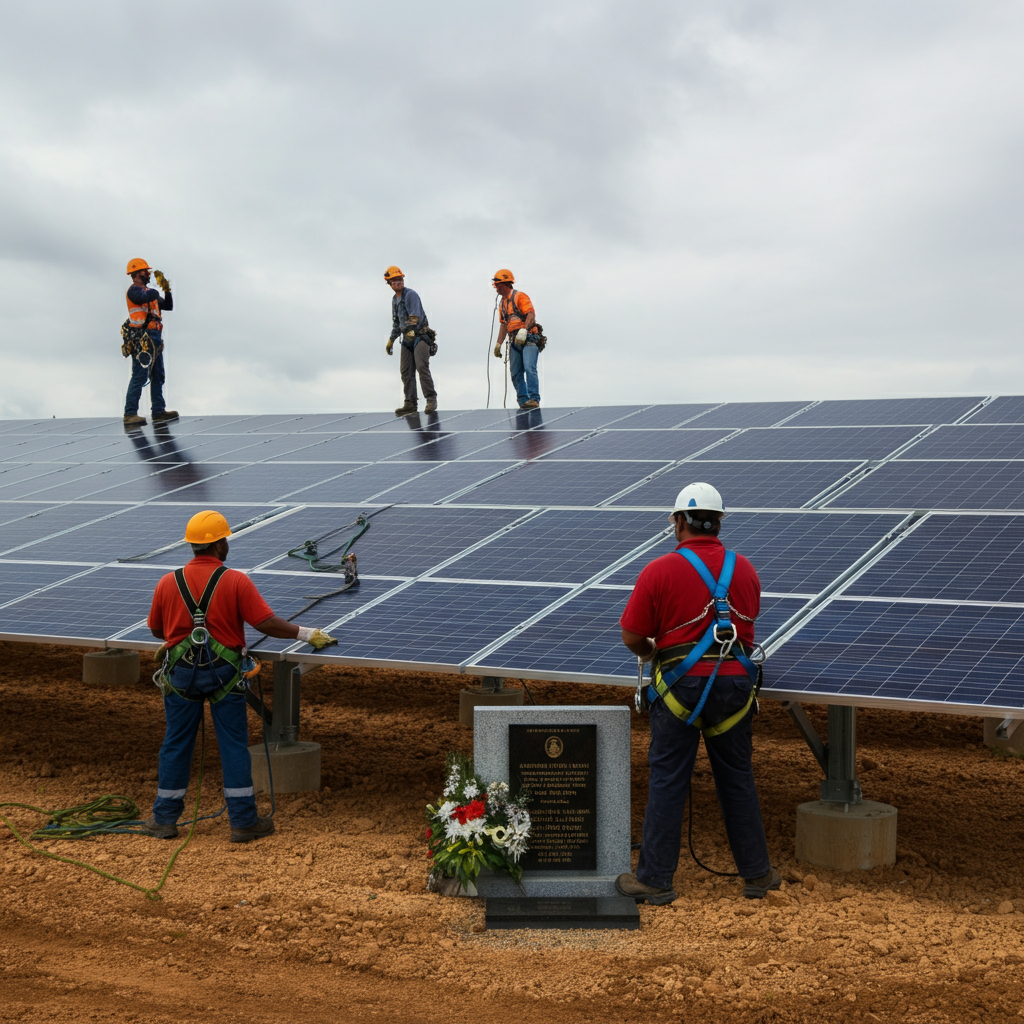Introduction
Many businesses, especially in high-risk sectors like solar panel installation, give workplace safety top priority. Tragic events still remind us of the need to follow correct safety procedures even with improvements in safety rules and awareness.
One such event happened in 2010 when a notable industry loss attracted notice to safety flaws. Today we’ll investigate what happened, examine its origins, and offer ideas on how the solar sector has changed to stop such mishaps. This book provides insightful information regardless of your role—that of policymaker, solar panel installer, or simply curious about workplace safety.
Background on Safety in Solar Panel Installation
Installation of solar panels carries special risks that make safety absolutely vital. Workers routinely handle heavy machinery, operate at heights, work with live electrical systems, and deal with changing weather.
Often driven by groups like OSHA and the Solar Energy Industries Association (SEIA), standard safety procedures include actions like proper use of personal protective equipment (PPE), including helmets, gloves, and harnesses.
- installing rooftop job fall arrest systems.
- Following building codes and scheduling routine equipment inspections.
- Using electrical safety rules helps to stop arc flash events and electrocution.
- Although these systems appear excellent on paper, a flaw in any one of them might have disastrous results, as the 2010 incident clearly shows.
Details of the 2010 Accident
During a regular rooftop installation in 2010, a solar panel installer sadly lost their life.
- An inadequately tightened or missing fall arrest mechanism caused the victim to fall from a height.
- The company under examination lacked thorough safety training and equipment checks.
- OSHA’s investigations revealed safety code violations, and media coverage raised general awareness of the need of better practices in this expanding sector.
Causes and Supporting Elements
A thorough investigation turned out several elements causing the accident:
- Lack of Proper Training
The installer had only received minimal instruction in equipment use and fall protective measures. This sloppiness in onboarding left the team vulnerable for possible risks.
- Failure to Implement Safety Measures
To stop falls, the location lacked correctly placed guardrails, harnesses, or anchors. These protections are fundamental components of safety regulations and their absence revealed systematic neglect.
- Weather Vulnerabilities
The weather on the day the tragedy occurred also had an impact; heavy winds made rooftop work more perilous. Appropriate processes connected to weather were apparently overlooked.
Such events draw attention to areas needing development and expose the weaknesses in readiness that can cost lives.
Affective Effect and Community Reaction
We have to realize the seriousness of human loss outside laws and inspections. Along with the victim’s family, this event affected their colleagues and the nearby neighborhood.
From business leaders, tributes flowed in stressing the need for more intense safety consciousness. Many solar industry colleagues were profoundly disturbed and inspired to urge stronger laws and improved safety education.
Industry Reaction and Notable Variations
The catastrophe woke the solar energy industry from its slumber. Important replies included:
- OSHA Penalties and Awareness Campaigns
OSHA fined the corporation implicated and started programs to raise industry-wide knowledge of fall protection equipment.
- Stricter SEIA Guidelines
The Solar Energy Industries Association changed its policies to enforce more PPE use and fall prevention strategies.
- Broader Training Programs
Supported by government funds, several training companies launched improved initiatives emphasizing solar installer safety. Integration of these developments into their courses was done by community colleges and vocational institutions.
Although reactionary, these developments have greatly lessened the possibility of comparable mishaps.
Preventive Action for More Safe Solar Panel Installations
The challenge now is making sure such mishaps never resurface. These are some essential safety tips derived from accepted OSHA and SEIA principles.
1. Prioritize Fall Protection Systems
Make that all of the work at heights includes fall arrest equipment, guardrails, safe harnesses, rooftop anchors. Train employees often on their use.
2. Offer thorough safety instruction.
Provide employees comprehensive training covering hands-on safety drills and emergency response protocols.
3. Plan Regular Equipment Inspections
To be sure all safety gadgets and equipment satisfy operational requirements, routinely check them. Replace immediately defective or worn-out objects.
4. Track Changing Weather Conditions
Make sure work pauses in strong winds, rain, or any other condition compromising on-site safety.
5. Respect Safety Procedures
Reinforcing compliance with building codes, PPE use, and safety protocol adherence will help to foster an accountable culture.
6. Encourage a Safety-First Thoughtfulness.
Encourage candid communication between management and employees. Motivational teams should encourage reporting of dangerous conditions free from concern of consequences.
These steps will help solar panel installation businesses to lead by example and safeguard their staff.
How You Can Change Things and Call to Action
Although our path toward sustainability depends on solar panel installation, human lives should never be sacrificed for this goal. This 2010 event should be a sobering reminder of the need of giving safety top priority in all we do.
Think back for a moment on your present safety procedures. Are these sufficient? Are they possible to get better?
- Review your procedures following OSHA and SEIA guidelines.
- To keep your staff safe, make investments in tools and safety instruction.
- Send this blog to colleagues in the field to raise more awareness.
- See us for a consultation on creating a thorough safety strategy for your projects.
Remember also to subscribe to our newsletter for continuous advice and updates that could make your workplace safer.
Recalling Acquired Knowledge
More than just a disaster, the 2010 solar panel installation accident marked a turning point for a sector trying to balance fast development with safety. Learning from the past and pledging proactive change will help us to protect employees and help to create a more sustainable future.
Safety belongs to everyone. And by working together, we can create an inventive and safe solar sector.
